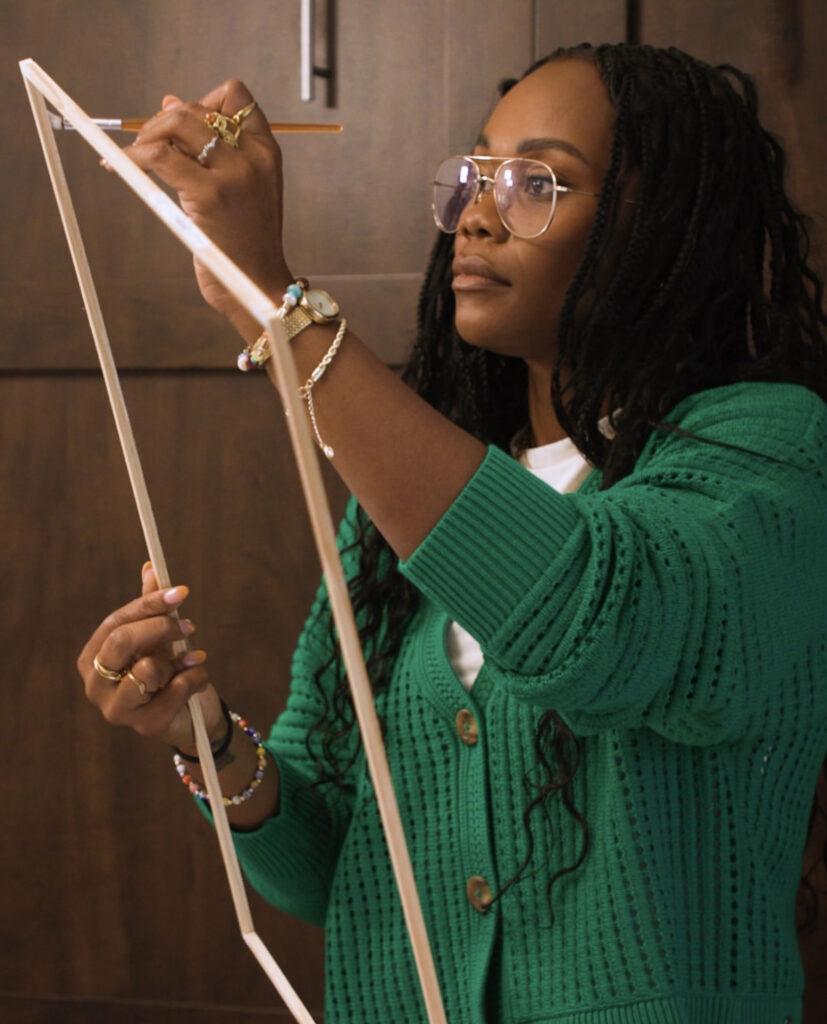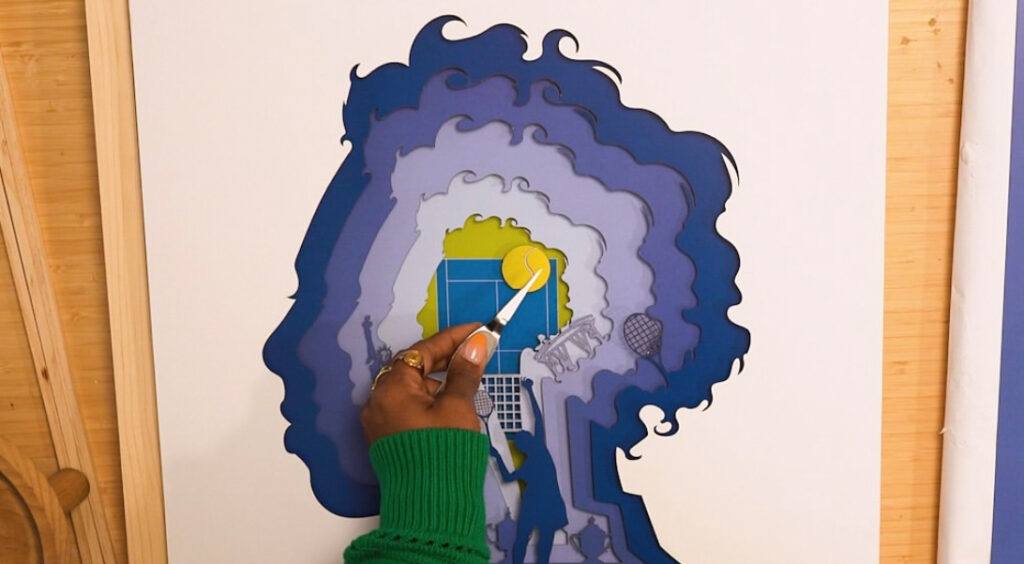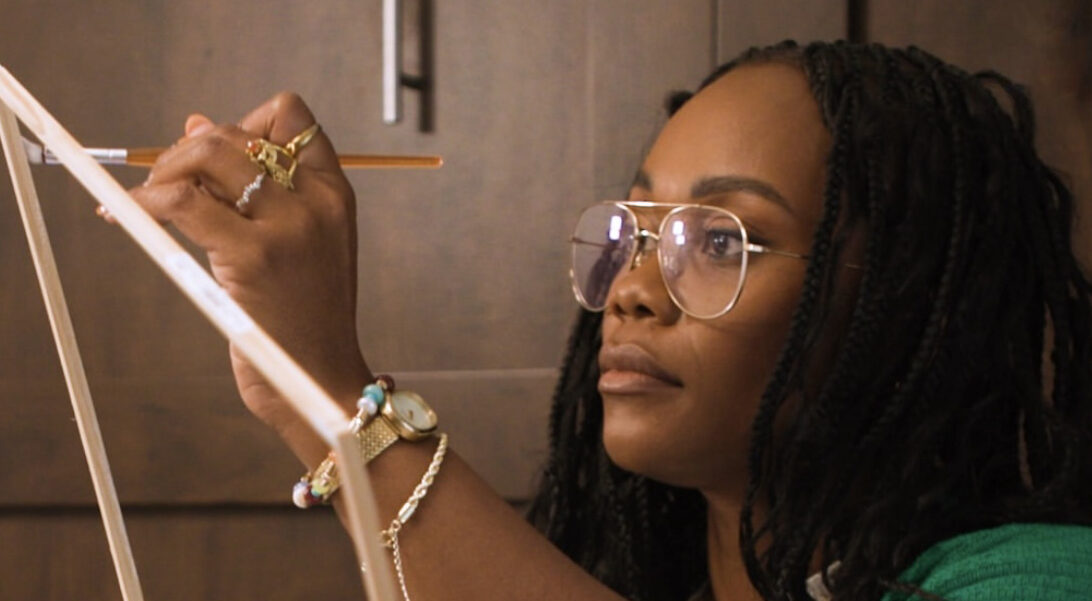Melissa Koby didn’t expect a drawing of a man working from home in his underwear and a button-up shirt to change her life. But in 2020, during the early months of the pandemic, she picked up her iPad and began sketching scenes that felt intimate and quietly defiant.
A woman in a flowing dress, serene on her couch. A couple sharing space in stillness. People, mostly faceless, finding a way to thrive inside isolation. She called it “the quarantine series.” She uploaded a few prints to Etsy. Then, someone asked to buy one. That moment set off a chain reaction that pulled Koby from her job in marketing and into full-time artistry by 2021. Four years later, her work will be the face of one of the biggest sporting events in the world.
Koby is the first Black woman to be commissioned as the theme artist for the US Open. Her artwork, honoring tennis legend Althea Gibson, will appear in large-scale installations throughout the tournament grounds in New York City this August. For the Jamaican-born, Tampa-based artist, the honor is as emotional as it is historic.
“Every time I saw the video of the US Open creation, I would just burst into tears,” Koby told 21Ninety. “I’m the first Black female theme artist for the US Open. I’m honoring Althea Gibson. It was huge.”

A Hobby Turned Profession
Though she had always drawn and painted, Koby said she never imagined pursuing art as a career. It was the uncertainty of the pandemic that brought her creativity back to the surface. The artist said she “needed to do something to feel good” during that time. She started with digital illustrations and built a community around the messages in her work: hope, unity, softness and strength. Her faceless figures offered a kind of universal representation, especially for women.
“I think I have a perspective that is relatable to a lot of people,” Koby said. “There’s maybe some authenticity within me, or maybe I’m relatable in some way, that they want to keep working with me.”
As her prints gained traction, Koby expanded her mediums and eventually began experimenting with paper cuttings, a technique that became central to her US Open piece. The Gibson portrait began digitally and was then laser cut to create a physical, layered dimension.
Telling Gibson’s Story Through Layers

Creating the tribute to Gibson was not a linear process. Koby said she went through eight rounds of revisions before she felt satisfied with how she was telling the tennis pioneer’s story. She knew early on that she wanted Gibson’s profile to be the focal point.
“I wanted to outline her in such a way that no matter who saw it, they would know that is Althea Gibson,” she said.
Rather than use obvious symbolism, Koby built the piece with quiet storytelling elements that could be discovered through a closer look. It includes a tennis court as the foundation, hints of New York City, and details that reflect the progression of Gibson’s legacy.
“She’s the blueprint,” Koby said. “There would be no Venus and Serena, no Coco [Gauff], without Althea.”
Gibson became the first Black player to compete in the US Nationals in 1950, going on to win five major singles titles and transform the sport for generations of Black athletes. This year’s US Open theme, “Breaking Barriers. Advancing Change,” centers Gibson’s impact in both sport and culture.
Full-Circle Moment
Koby said one of her goals when she began working with paper was to see her work displayed in large-scale form. This summer, that dream will be realized.
“They’re actually going to make the portrait into larger installations,” she said. “To have that goal checked off, I don’t know where to go from there.”
While she may not know her next steps, she has no plans on stopping now. Instead, she plans to keep going and reach new heights. She is not doing so for the spotlight, but rather for the meaning behind each piece.
“I just want to be able to touch people with my art,” she said. “Inspire people. Challenge myself. Keep myself inspired.”
She also hopes that the story she helped bring to life sparks something in others, especially young Black girls.
“If she can do it, so can I,” Koby said. “It doesn’t have to be in art. Just anything in this realm. I want it to serve as inspiration for somebody else down the line. That’s enough.”
